
Reviving the Wisdom of Indian Cuisine
Namaskar & Swagatam
Welcome to Food Gurukul, a sacred abode where the legacy of Indian cuisine is preserved, celebrated, and propagated. Inspired by the guru-shishya parampara (teacher-student tradition), this platform is a tribute to the timeless culinary wisdom of India. It seeks to revive the parampara (tradition) of rasoi kala (kitchen art), integrating ancient knowledge with modern tools to ensure the survival of our swaad shaili (culinary styles).
By honoring the teachings of khansamas (royal cooks), homemakers, and regional food custodians, Food Gurukul will nurture a new generation of vidyarthi (students) dedicated to preserving India’s culinary soul.
Swaad - स्वाद Gurus
(Chefs, Food experts, Reviewsrs, Nutritionists)
The heart of Food Gurukul lies in its gurus—the Swaad (स्वाद) Acharyas (Chief masters) who impart their wisdom to guide learners toward the indepths of Traditional Indian Culinary.
These gurus—chefs, food experts, reviewers, and nutritionists—are entrusted with imparting their vast wisdom to anyone ineterested in exploring the diverse culinary traditions of India.
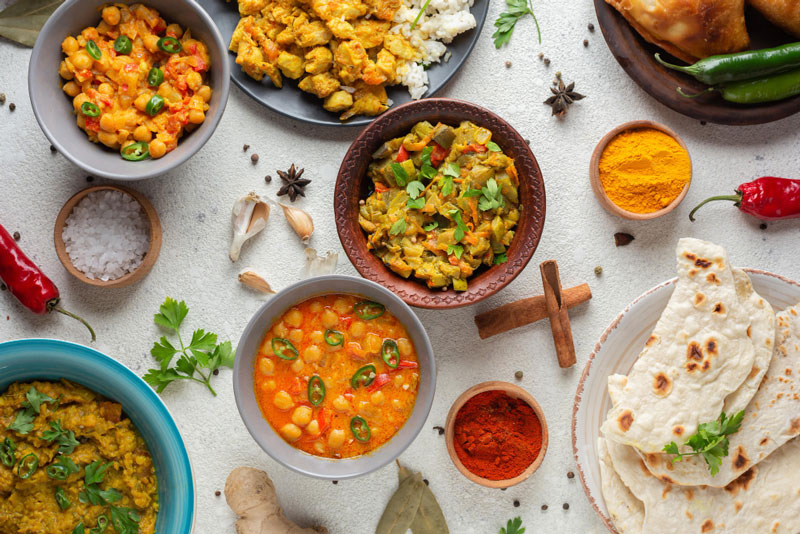
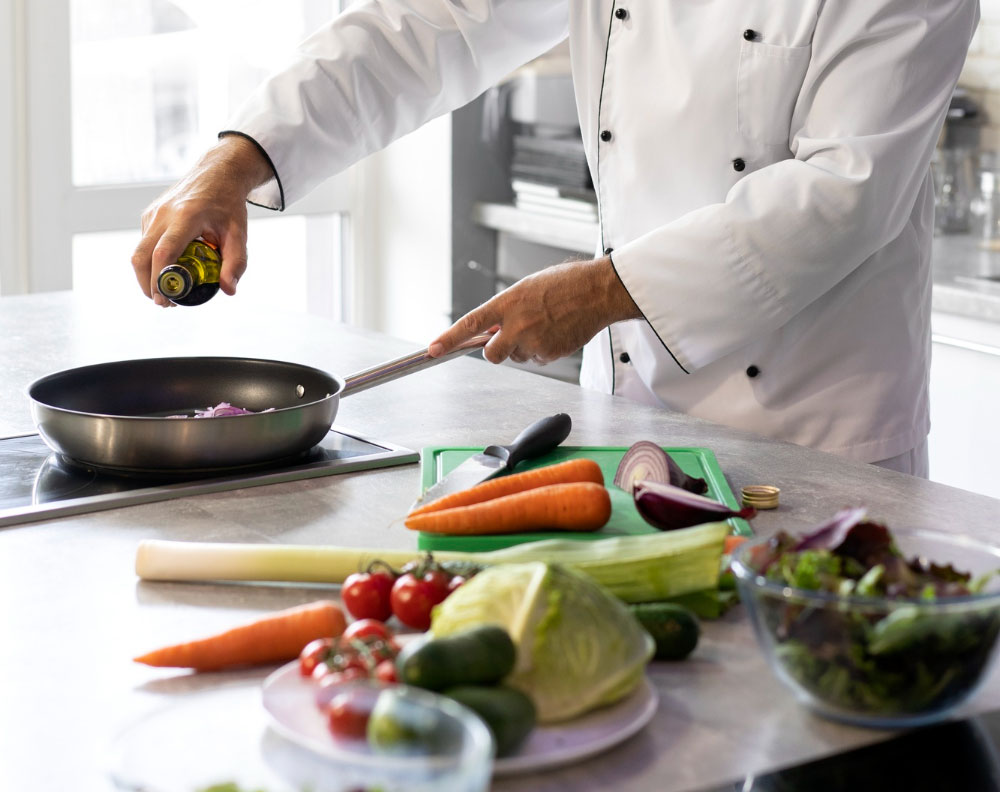
Swaad (स्वाद) Acharyas (Culinary Masters)
Renowned chefs like Osama Jalali, who has dedicated his life to rediscovering and reviving royal Mughal dishes, preserved the art of slow cooking using traditional methods such as dum pukht and mitti ke bartan (clay pots). He has meticulously brought back forgotten flavors, like Khichdi Dawud Khani and Murgh Zamin Dos.
These gurus—chefs, food experts, reviewers, and nutritionists—are entrusted with imparting their vast wisdom to anyone ineterested in exploring the diverse culinary traditions of India.
Regional Experts
Chefs like Pallavi Nigam Sahay focus on swaad (flavor) that is deeply rooted in regional food traditions, such as Bafauri from Chhattisgarh and Siddu from Himachal Pradesh.
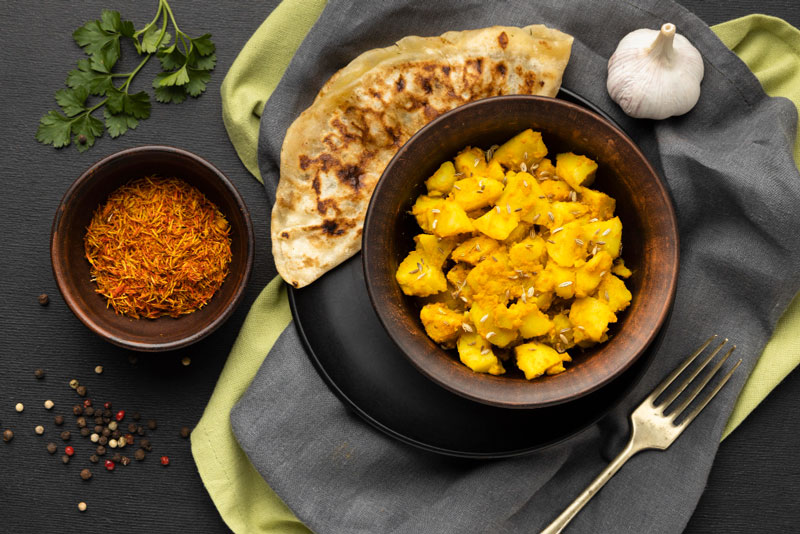
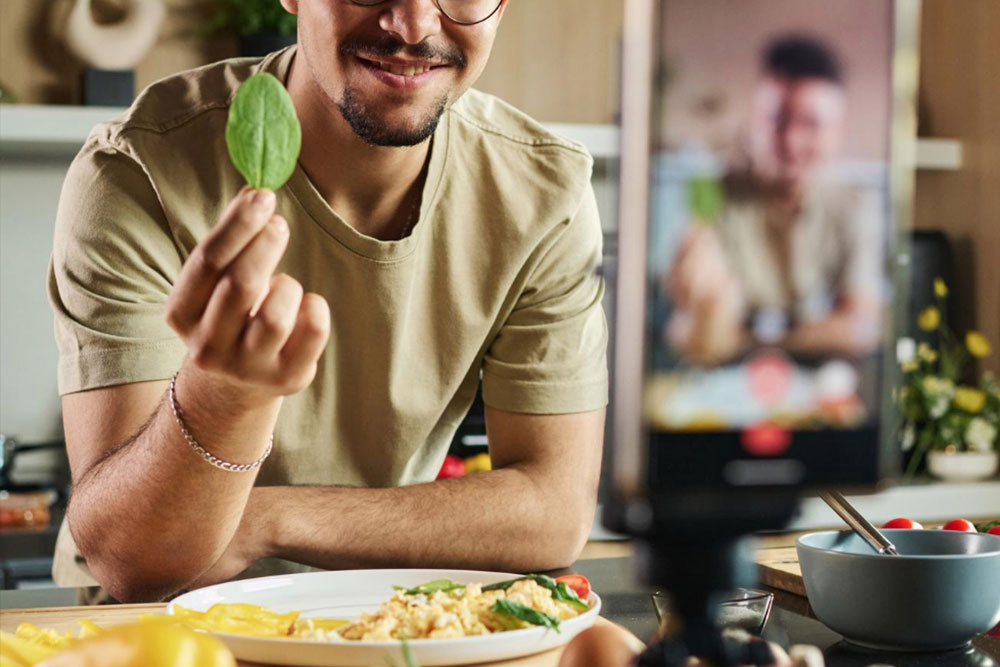
Food Reviewers and Critics
Experts who delve into the nuances of authentic versus modern interpretations of Indian food, providing critical insights into the evolution of traditional dishes Retailer Insights. They challenge popularized recipes, encouraging a return to traditional ingredients and cooking methods.
Nutrition Gurus
Food experts and nutritionists advocating for the integration of nutrient-rich, indigenous ingredients such as ragi, bajra, and jowar into modern diets, emphasizing the importance of these grains in maintaining health and wellness
These Swaad (स्वाद) Acharyas not only guide learners through the practical aspects of cooking but also share the aesthetic value of Indian food, ensuring the legacy of ancient culinary practices thrives for generations. This can be done through :
"स्वाद Shaala" (Skill - building)
Swaad (स्वाद) Shala will serve as a vibrant hub for skill-building, offering enthusiasts an immersive journey into the art of Indian traditional culinary practices. This section emphasizes skill development through step-by-step lessons in essential techniques like precise vegetable cutting, hand-rolling breads for roti or naan, mastering tandoor grilling, and using traditional tools like the silbatta (stone grinder). Swaad (स्वाद) Shala will bridge the gap between tradition and modernity, empowering learners to refine their culinary expertise while preserving the authenticity of Indian cuisine.
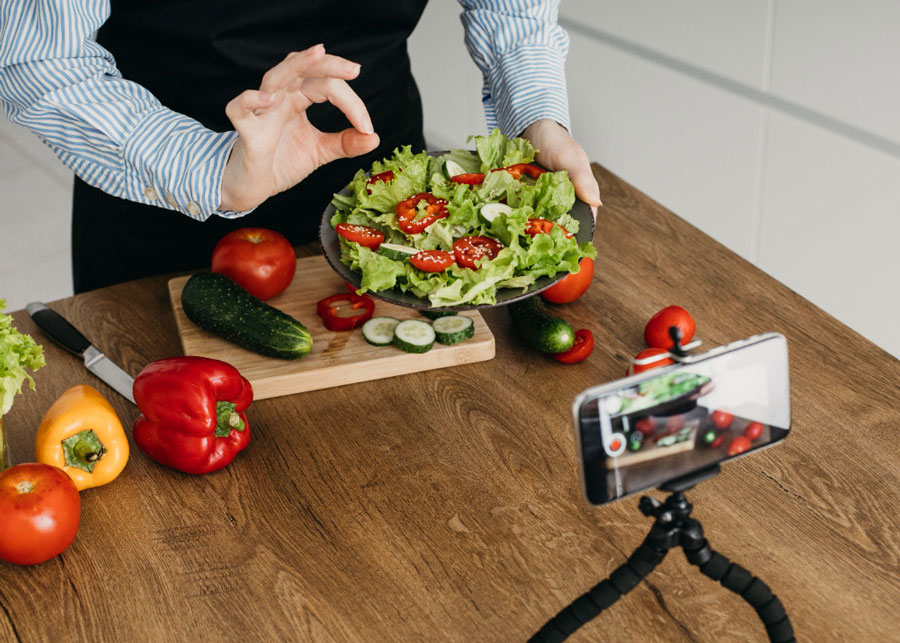

स्वाद Dharohar (Culinary Heritage of India)
An exploration into India’s vast culinary heritage, delving into the traditional dishes and methods that have long been part of the country’s regional kitchens but are now at risk of disappearing. This section highlights forgotten recipes and time-honored practices that form the backbone of Indian cuisine, from the smoky richness of dum pukht (slow cooking) to the delicate use of silbatta (stone grinders) for crafting authentic spice blends
Through detailed documentation, storytelling, and expert insights, Swaad (स्वाद) Dharohar aims to breathe life into these culinary treasures.
It emphasizes not just the preservation of recipes, but the cultural significance behind them—showing how food is tied to our environment, rituals, and the way of life of communities that have maintained these practices for centuries. The section is also a celebration of forgotten cooking tools, like the traditional mitti ke bartan (clay pots), which bring out the best in flavors, or the regional tandoors that impart a unique smokiness to breads and meats Triphobo ,Chandigarh Philosophers
स्वादिष्ट Kisse: Stories and Science of Indian Cuisine
Swaadisht (स्वाद) Kisse (The Stories of Cooking) will explore the science, history, and cultural essence of Indian cuisine, unraveling the hidden logic behind traditional recipes and methods. For instance, techniques like tadka (tempering spices) not only enhance aroma but activate health-beneficial compounds, while slow-cooking in mitti ka bartan (clay pots) imparts an earthy flavor and retains nutrients. Recipes like Kadhi balance probiotics with spices, reflecting Ayurvedic wisdom, while Pachadi (fermented rice or yogurt dishes) highlights ancient gut-health practices. Stories will also delve into unique examples, such as Gutti Vankaya (Andhra stuffed brinjal) or Rogan Josh, which evolved from Kashmiri influences of Persian royalty.
By sharing fortnightly narratives, Swaadisht (स्वाद) Kisse will celebrate diverse regional practices, such as cooking millet-based Raab in Gujarat to combat malnutrition or sun-drying mango slices for Amchur in Uttar Pradesh, a natural souring agent. With insights into culinary customs like banana leaf serving (enhancing flavors with its natural wax) or masala blends adhering to shad rasa (six-taste philosophy), this platform will ensure the essence of Indian food traditions continues to inspire and enrich modern kitchens.
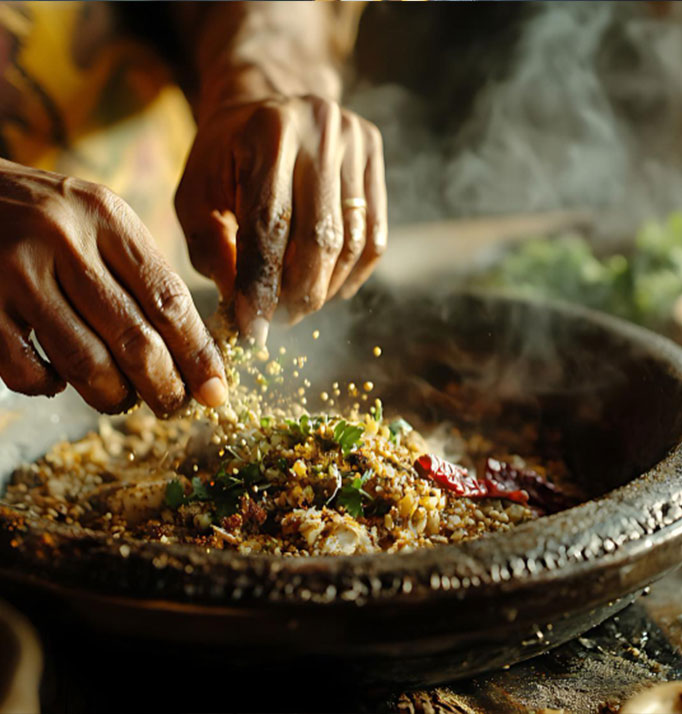
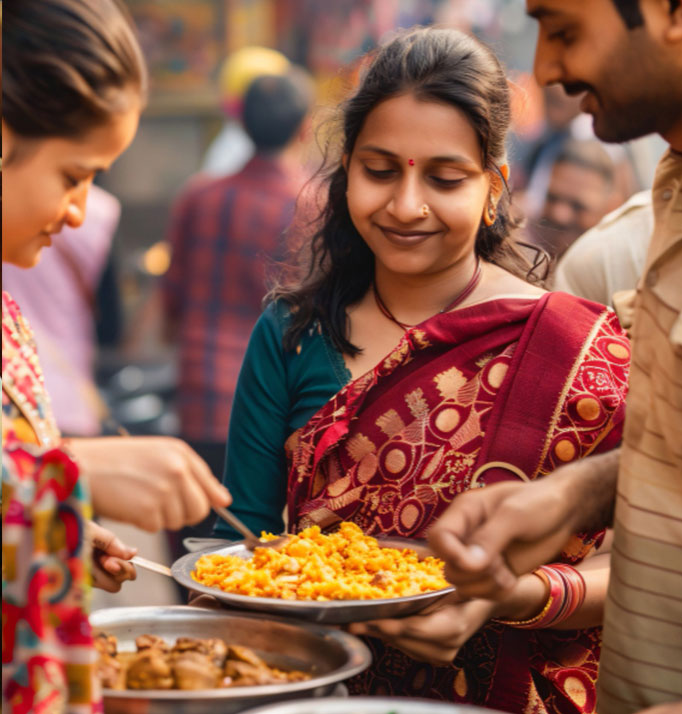
स्वाद Samudaay (Community Building)
Building a community of culinary enthusiasts, where individuals come together to share, learn, and celebrate the diversity of traditional Indian cooking. This section fosters a spirit of collaboration, creating a platform where food lovers, chefs, and home cooks can engage in meaningful dialogue, exchange recipes, and pass on culinary wisdom across generations.
The section will encourage members to participate in virtual cooking events and forums, where one can ask questions, give tips, or showcase their cooking experiments.
A Treasure trove dedicated to the deep and rich culinary traditions of India, offering a wealth of resources for those seeking to understand the history, techniques, and recipes that have shaped Indian kitchens. This section serves as a comprehensive archive, preserving the essence of Swaad (स्वाद) kala (the art of cooking) through detailed guides, articles, and traditional cookbooks that capture the heart of India’s diverse food heritage.
स्वाद Sangrahlay (The Resource Library)
Swaad (स्वाद) Sangrahlay is a comprehensive repository dedicated to preserving and sharing the rich culinary knowledge of India in the form of ancient cookbooks, manuscripts like the Ain-i-Akbari and the Kitab-al-Tabeekh. This section serves as an open digital repository of resources, where enthusiasts, chefs, and food scholars can find everything from regional recipe collections to scholarly articles on Indian cooking methods and ingredients.
